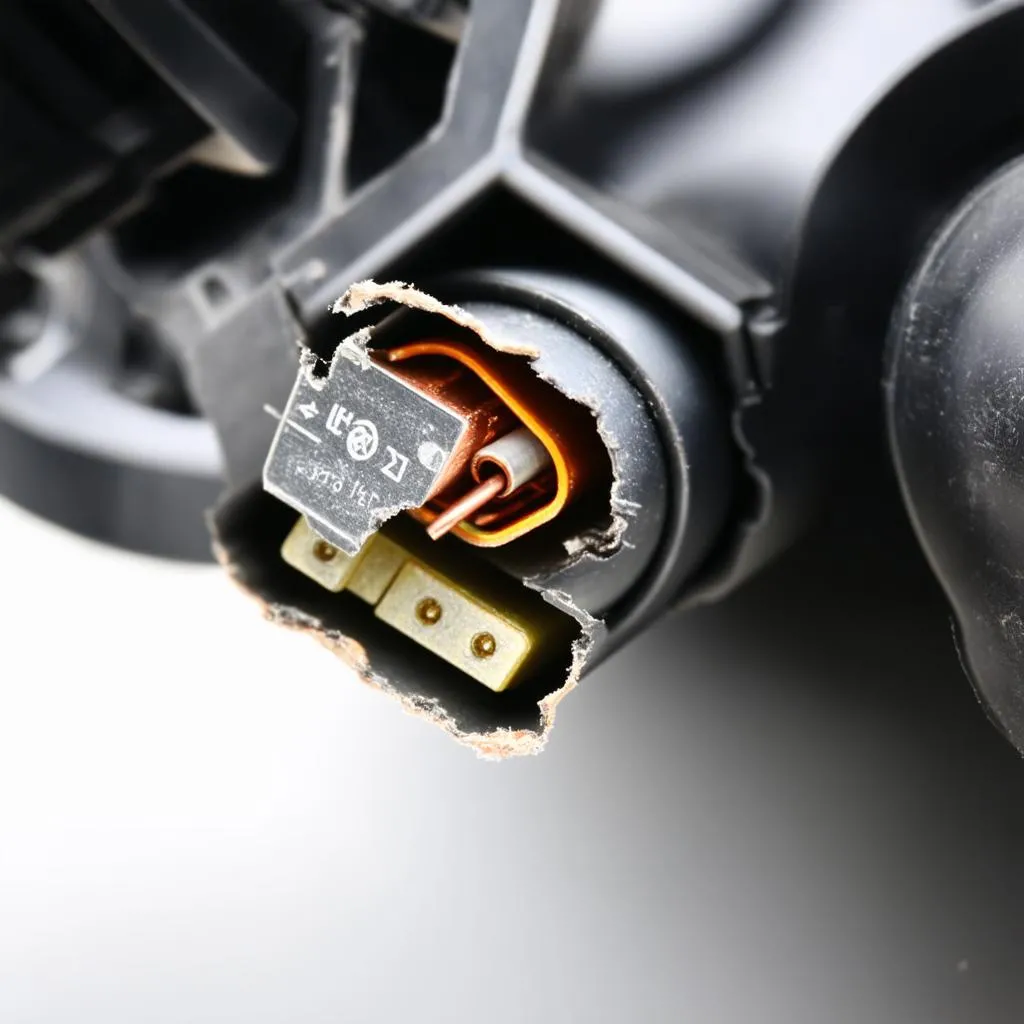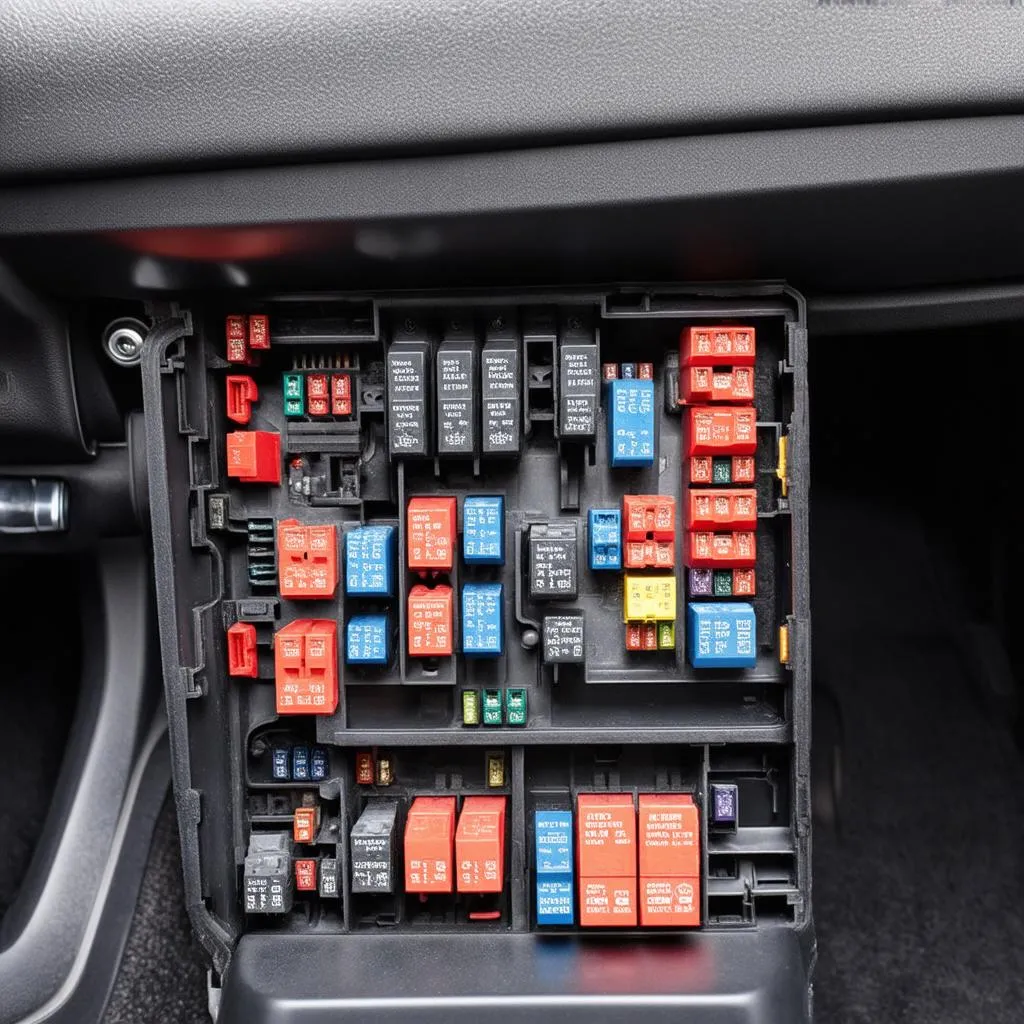Decoding the Mystery: Your Guide to Car Fuse and Relay Boxes
Imagine this: you turn the key in the ignition, expecting the satisfying rumble of your engine, but instead, you’re met with…silence. Frustrating, right? This scenario, my friends, is often where the mystery of the Car Fuse And Relay Box begins. But fear not, intrepid car enthusiast! This guide will demystify these essential components, leaving you empowered to tackle electrical gremlins head-on.
Understanding the Unsung Heroes: Fuses and Relays
From a seasoned mechanic in a bustling Chicago garage to an electrical engineer in a Silicon Valley lab, everyone agrees: fuses and relays are the unsung heroes of your car’s electrical system. They’re the silent guardians, protecting delicate components from damaging electrical surges.
Think of a fuse like a sacrificial lamb. It’s a small, inexpensive component designed to burn out and break the circuit if the current flowing through it exceeds a safe level. This self-destruction might seem dramatic, but it prevents costly damage to vital systems like your car’s ECU, headlights, or even the radio.
Relays, on the other hand, are the heavy lifters. They use a small current to switch a much larger current on or off. Picture them as the electrical middlemen, taking orders from your car’s various switches and buttons to activate power-hungry components like the starter motor or the headlights.
Locating the Treasure Chest: Where to Find Your Fuse and Relay Box
Now that we understand their importance, let’s find these electrical guardians! Your car’s fuse and relay box is typically located in one of two places:
- Under the hood: Often nestled beside the battery or tucked away near the fender, this location provides easy access for jump-starting and other under-the-hood maintenance.
- Inside the cabin: Some manufacturers prefer to house the fuse box within the passenger compartment, usually under the dashboard or in the glove box. This location offers protection from the elements and easier access for replacing blown fuses.
Consult your owner’s manual for the exact location in your vehicle. You’ll find it clearly marked with a diagram outlining the function of each fuse and relay.
When the Lights Go Out: Common Symptoms of Fuse and Relay Problems
Your car often gives you subtle (or not-so-subtle) hints when fuses or relays are acting up. Keep an eye out for these telltale signs:
- A complete electrical failure: If a particular system (like headlights, power windows, or turn signals) stops working entirely, a blown fuse is often the culprit.
- Intermittent electrical issues: Experiencing flickering lights or a radio that cuts out randomly? This could indicate a loose connection or a failing relay.
- Burning smell: A distinct burning odor emanating from the fuse box signals a serious problem, possibly a short circuit. In this case, immediate attention is required to prevent further damage.
 blown car fuse
blown car fuse
Playing Detective: Troubleshooting Fuse and Relay Issues
Don’t worry, you don’t need to be a certified mechanic to diagnose basic fuse and relay problems. Here’s how you can channel your inner Sherlock Holmes:
- Safety first: Always disconnect the negative battery terminal before working on any electrical components.
- Identify the suspect: Consult your owner’s manual to locate the fuse or relay associated with the malfunctioning system.
- Inspect the fuse: A blown fuse will have a visible break in the metal filament.
- Test the relay: Swap the suspect relay with a known good one of the same type. If the problem persists, the relay might be the culprit.
Pro Tip: Keep a variety pack of fuses and common relays on hand for quick fixes.
Beyond the Basics: Seeking Professional Help
While replacing a blown fuse can be a simple DIY task, some electrical gremlins require the expertise of a qualified mechanic. If you encounter the following:
- Multiple blown fuses
- Recurring problems with the same fuse or relay
- An inability to locate the source of the electrical issue
It’s best to seek professional help. As renowned automotive electrical expert, Dr. Helmut Krueger, states in his book “Automotive Electrical Systems Demystified,” “Attempting to diagnose complex electrical issues without proper knowledge and tools can lead to further damage and potentially dangerous situations.”
Don’t Get Left in the Dark: Preventative Measures for a Healthy Electrical System
Just like regular oil changes and tire rotations, a little preventative maintenance can go a long way in ensuring the longevity of your car’s electrical system:
- Avoid overloading circuits: Be mindful of how many devices you’re plugging into your car’s power outlets. Overloading a circuit can lead to blown fuses.
- Keep it clean: Dust and debris can accumulate in the fuse and relay box, potentially causing shorts or corrosion. Use compressed air to gently clean it periodically.
- Regular inspections: Make it a habit to visually inspect your fuses and relays during routine maintenance.
 car relay box
car relay box
Frequently Asked Questions:
Q: Can I use any fuse in my car?
A: Absolutely not! Using the incorrect amperage fuse can lead to serious damage. Always replace a blown fuse with one that has the same amperage rating, which is clearly marked on the fuse itself.
Q: My car won’t start, could it be a relay problem?
A: It’s possible! The starter relay is responsible for supplying power to the starter motor. If it’s faulty, your car might not crank.
Q: Can I replace a relay myself?
A: Replacing a relay is generally a straightforward process, but it’s essential to consult your owner’s manual for the correct type and location.
Still Feeling Powerless? We’re Here to Help!
Navigating the world of car fuses and relays can be daunting, but remember, you’re not alone! If you have any questions or need assistance with diagnosing electrical issues in your vehicle, don’t hesitate to reach out to our team of automotive experts via WhatsApp at +84767531508. We’re available 24/7 to provide support and guidance.
Keep the Current Flowing
Understanding the basics of your car’s fuse and relay box empowers you to tackle minor electrical problems with confidence. Remember, regular maintenance and prompt attention to warning signs are key to a healthy and reliable electrical system. Drive safe and keep those lights shining bright!
For more insights on troubleshooting specific electrical issues in your BMW, check out these articles:
We also have resources on:
